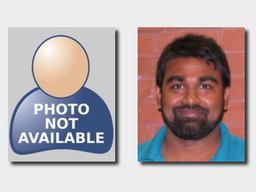Graduate Students Seminar
Location
Mathematics/Psychology : 104
Date & Time
October 15, 2025, 11:00 am – 12:00 pm
Description
| Session Chair: | Soumadeep Bhowmick |
| Discussant: | Dr. Yi Huang |
Speaker 1: Pallabi Ghosh
- Title
- Software Reliability Modeling
- Abstract
- Software reliability refers to the probability that software operates without failure over a specified period. It reflects the credibility or trustworthiness of the software. This presentation explores statistical approaches to modeling software reliability, integrating both classical and modern frameworks. Beginning with the Jelinski–Moranda model and Type II models for failure counts, it extends to discrete-time models suitable for batch-wise testing scenarios. Motivated by ISRO's flight control software data, a hierarchical Bayesian model is developed to estimate the total number of bugs and software reliability. The methodology follows the framework proposed by Dey and Chakraborty (2024) in Estimating Software Reliability Using Size-Biased Modelling, where the estimation problem is formulated using size-biased concept by introducing eventual bug size as a latent variable. Using data augmentation and MCMC estimation, the model quantifies reliability growth across testing phases, demonstrating its effectiveness in guiding software testing and reliability assessment
Speaker 2: Dinesh Ekanayaka
- Title
- Chemical Reaction Networks with Limit Cycles
- Abstract
- Understanding the number and nature of limit cycles in a dynamical system is crucial for predicting its long-term behavior and for distinguishing between stable oscillations and chaos. In this study, we introduce the limit cycles and investigate the lower bound of the number of limit cycles in a planar ODE system. To address the existence and multiplicity of limit cycles, we present a family of parameterized planar ODE systems to guarantee at least $K$ stable limit cycles with sufficient spatial separation. Using geometric constructions and the Poincaré–Bendixson theorem, we sketch a proof that establishes a lower bound on the number of limit cycles. Finally, we attempt to extend the results to chemical reaction networks, demonstrating that the existence of a limit cycle is an unrealistic reaction, as proposed by Prigogine and Lefever in 1968. For further studies, we investigate the upper bound for chemical reaction networks.
Tags:
